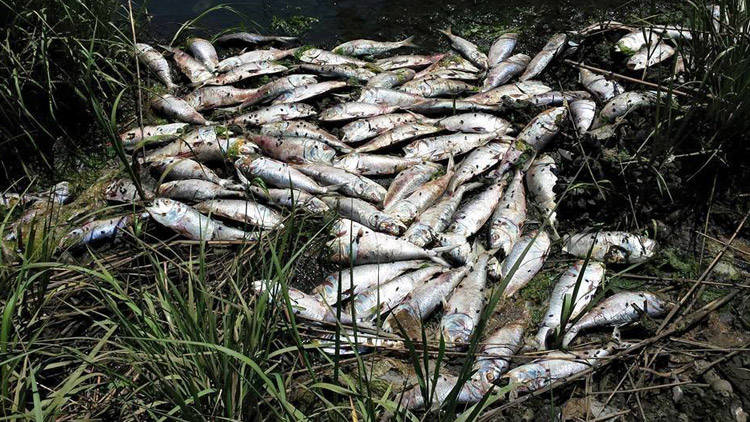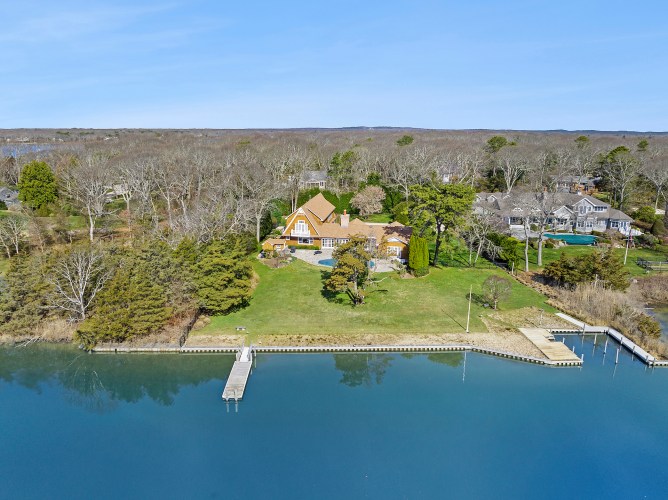Long Island’s water quality crisis was on display in a very public way throughout the month of June, when tens of thousands of fish began washing ashore from Port Washington on the North Shore of Nassau County to the Peconic Bay on the East End of Suffolk.
“Vast numbers of dead and dying fish were bobbing in the water and stretching to the opposite bank, like a silvery floating bridge,” as The New York Times described the carnage. “Carcasses were piled at the river’s edge and clumped in the marsh grass.”
An estimated 300,000 to 400,000 bunker fish have died since the fish kills started, according to the New York State Department of Environmental Conservation. The grim scene was compounded by the hot summer weather, with observers saying that the fish were “throwing themselves up on the boat ramp of the Riverhead Yacht Club in a desperate bid to get oxygen.”
It was a gruesome display. But will it be enough to get policymakers to take serious action to protect LI’s waters?
Suffolk County Executive Steve Bellone’s recent pitch for federal assistance was a good start. Although the county’s planning priorities have been imperfect, the current administration is shrewd, proving very capable at getting funding for their initiatives. If those efforts can be put to work for additional wastewater infrastructure in the Peconic watershed area and its environs, the region would be better off as a whole. The economic impact of the Island’s tourism and fishing industries is too significant to let it go fallow, while recreational usage of the coast affects the residents’ quality of life.
To support Bellone’s pleas for funding, we need more effort from Nassau County Executive Ed Mangano as well as from state and local policymakers to collectively support improvements that will curb nitrogen contamination in the waters off LI and prevent future fish kills. While the proposed Bay Park Sewage Treatment Plant outfall pipe is much needed in Nassau, Mangano should go further. According to the Long Island Press:
“The outfall pipe, which would redirect treated waste many miles into the Atlantic Ocean instead of being dumped in the vulnerable Western Bays, is needed in order for the new plant to meet the Environmental Protection Agency’s Clean Water regulatory standards. According to the governor’s office, the Bay Park plant currently treats about 50 million gallons of sewage a day, discharging the treated water into the back bay north of Long Beach.”
The lack of a Bay Park outfall pipe and Suffolk’s nitrogen woes are one in the same. LI needs fiscal help addressing its water quality crisis, and it’s time both Nassau and Suffolk pushed hard together for action.
In largely unsewered Suffolk, the front line of the war on nitrogen, policymakers must realize that pristine water quality cannot be won with sewers alone. Bellone would be wise to continue Suffolk’s widely praised historical efforts to preserve open space. In particular, the Pine Barrens Joint Planning and Policy Commission, the entity tasked with ensuring the integrity of the 100,000-acre preserve, should seek to find a renewed life under Suffolk County’s stewardship. The Pine Barrens Commission has faced many challenges regarding development pressures in the area, and strong leadership and representation from the county is needed in order to maintain protected nature of the “compatible growth” areas.
Governmental actions such as the preservation of the Pine Barrens maximize the effectiveness of hard infrastructure solutions like sewers, and policymakers would be wise to put whatever funding is available towards both efforts. As the Pine Barrens act, which was passed in 1993 in order to protect the Island’s aquifer by preventing development in the pristine, geologically sensitive woodlands, ages, the institutional memory of its importance fades. The entire fragile preservation act hinges on the integrity of its zoning boundaries, and localities are not up to the task of continued preservation, despite their zoning powers. Suffolk must curb the towns’ addiction to variances and hold the line on the strict zoning that preserves the integrity of the region.
What it comes down to is dollars and sense: what is the true environmental benefit of sewering versus preserving pricey tracts of open space? Compared to a mile of sewer pipe, it might be more cost effective to purchase additional large open space parcels for aquifer recharge. And, just as important, whose answer should guide policymakers’ hands and what is more beneficial to the environment in the long run?
An important concern must also be addressed: Are the sewers purely for protecting the environment, or for promoting more growth? Philosophically, the sewer efforts should be focused on targeted areas where the environmental impact will be the greatest, not where additional development is desired but improper infrastructure in place is an obstacle. We must address our water quality issues, not create more of them.
The fish kills were a tangible example of what will continue to happen if Long Island as a whole fails to protect the sole source aquifer system, and the surface waters that surround our region.
Whether you live in Glen Cove or Mattituck, we all drink the same water. It’s time to start acting like it.
Rich Murdocco writes about Long Island’s land use and real estate development issues. He received his Master’s in Public Policy at Stony Brook University, where he studied regional planning under Dr. Lee Koppelman, Long Island’s veteran master planner. Murdocco is a regular contributor to the Long Island Press. More of his views can be found on www.TheFoggiestIdea.org or follow him on Twitter @TheFoggiestIdea.



























